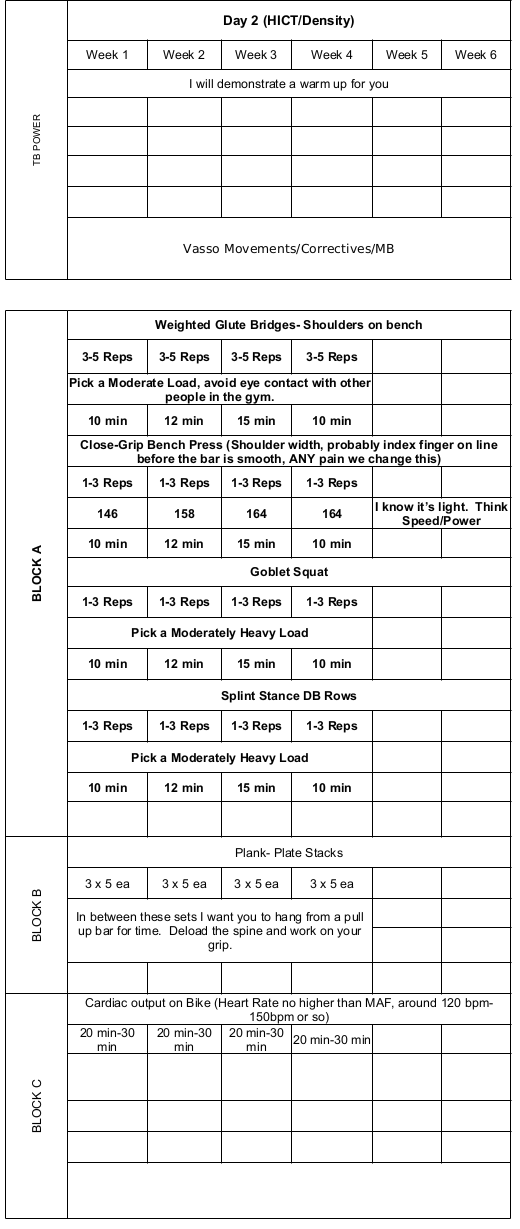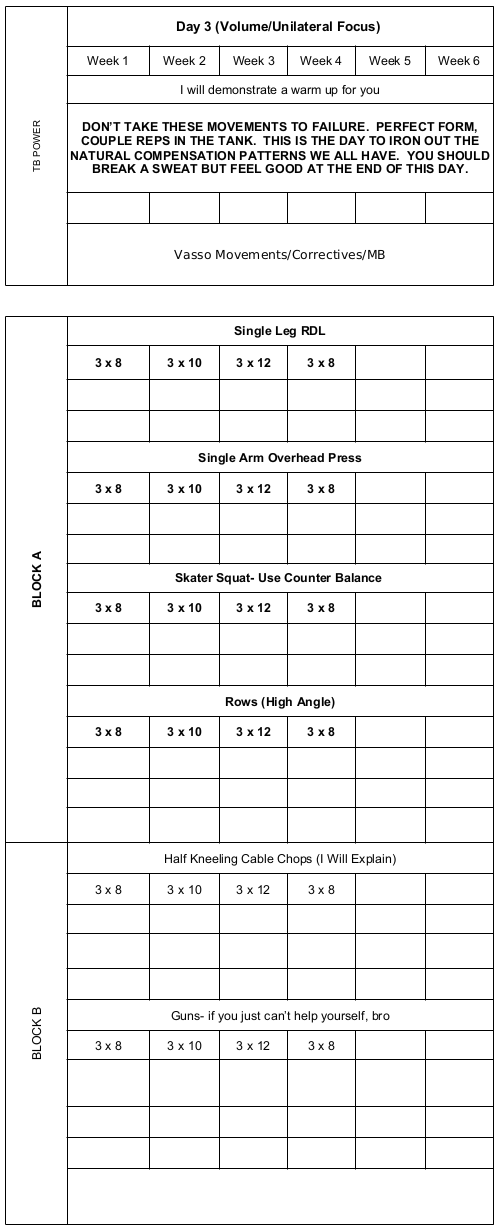Preparing Former Army Ranger Nicholas Ige to Summit Mt. Denali Part 2- The First Phase
Nicholas Ige is a Harvard student who brings awareness to veteran mental health and education by climbing the world’s 7 tallest mountains...this is how we trained for his climb up Mt. Denali.
Content on Long Term Strength and Conditioning will always be free. If you enjoy these posts, please share, donate, or consider my book:
Answering the Call: Proper Physical Training for Police and Military in the in the 21st Century
NEW:
For daily programming, I have joined We Go Home LLC as their Director of Human Performance. Start your free trial here.
A while back I was checking in with Nick and I made the mistake of thanking him for something. Why was this a mistake? Well, he responded with:
“Gang Gang.”
Wondering if this text might be a typo...I asked Nick what this meant. His response?
“Whatever feels right just go with it.”
While risking potential black out I asked again...and I am only slightly paraphrasing here, but his clarified definition was:
“On that gang shit. You’re welcome”
I am getting old and angry.
Part 1 of this series was the macro breakdown of how I programmed for Former Army Ranger Nicholas Ige’s climb up Mount Denali, the tallest mountain in North America.
This article is going to take a deep dive into his first phase of programming.
Overall Schedule:
Above is our schedule for the month, generally following a High/Low model. Meaning, I don’t stack high intensity days back to back. With as much conditioning as Nick does, and really for anyone who has a life, people typically burn out without adequate rest between high intensity training days.
Strength 1:
This is the “heaviest” day Nick is going to do through this phase. He still needed time to recover from his 50 miler and I chose to use submaximal 5x5 sets to build/maintain his strength to support his climb. All of the numbers you see are based off of a VERY conservative max for Nick, basically a 3RM (3 Rep Max) or slightly lighter. Nick is a strong dude based off any “normal person” standard, but again at this stage recovery was more important. I also considered the wear and tear from his previous life/current hobbies when deciding to keep his numbers on the lighter side.
I demonstrated a basic warm during a Facetime call where Nick made inappropriate comments the entire time, and then described how I wanted him to complete each block as a “slow super-set.” I knew if I just told Nick it was a super-set, he would immediately remove his shirt and post a video of him doing each movement with as little rest as possible.
To avoid this pitfall, I told him for Block A you will do your Trap bar deadlifts, rest about a minute, then do goblet reverse lunges on a slider with a moderate/light load, then rest about a minute, and repeat. This would provide a little over 2 minutes of rest between his trap bar deadlift sets.
I have found that doing a light unilateral movement between bilateral lifts can be a game changer. Especially for more seasoned trainees. It get us to fire our stabilizers that we forget about, and improves movement quality.
Nick had the same instructions for Block B, except this was his “upper” focus. I used floor presses because he had some shoulder pain and it was more important to get that healed. This checked Nick’s meatheadedness, and are phenomenal for starting strength without needless strain to his shoulders.
We then finish with heavy suitcase carries (load held on one side) to hopefully clean up some imbalances he’s developed over the years. In week 1 he stops here.
For the rest of the block, he does a moderately loaded ruck (30-40lbs) for 30-60 minutes to get more time on his feet under load. He was explicitly told to just walk fast on these, with no running. I think he listened, but who knows…
Day 2 HRI + HICT Step Up
On this day we start to build Nick’s aerobic system via lower impact methods.
High Resistance Intervals (HRI) is a form of interval training where we use high resistance/short intervals (5-10 seconds) followed by full recovery. Part of the magic of these is by allowing for full recovery, the quality of each rep remains high while also training the aerobic system. Modalities for HRIs could be the Rogue Echo Bike, a spin bike with high resistance, hill sprints, sled, etc.
High Intensity Continuous Training (HICT)- From my old article on this topic:
“HICT has one use a high load/resistance and continuously repeat a movement pattern while staying under your anaerobic threshold. This requires patience, as your heart rate will spike when you first try this. Especially if you are not aerobically fit yet. For most, that means keeping your HR around 150 bpm, then maybe in time when you are in better shape let it climb to 160 bpm for the duration of your set.”
For Nick, we used loaded step ups as this translates well to rucking, it is low impact (again, recovery is paramount here) and we can continue to build his aerobic capacity. These, in my opinion, are the “go-to” for professions that require one to wear or carry load.
Day 3- Strength 2:
This is similar to day 2, except we use a circuit with timed sets of total body lifts for low reps. Week 1 is 10 minutes, and for that entire time Nick would work on trying to get in as much volume as possible, while maintaining a heart rate of 150-160 bpm. Each rep should be moved with intent/speed. Finish with some zone 2 low impact cardio.
Day 4- Recovery
He doesn’t listen... but I think he took the day to do some mobility or zone 2 work. Ideally both.
Day 5- Strength 3
We dedicate this day to balance Nick out, build some muscle, and give him a break from bilateral heavy loading. This day should be moderate loads, slow circuit, hypertrophy rep ranges, full range of motion, and moderate tempo. Finish with sculpting the guns. After this workout most people feel tired, but somewhat rejuvenated.
Day 6- Ruck
This is going to be the most “sports specific” thing we do to support Nick’s climb. It is crucial that again, I cannot overstate this- he needs to recover from his overuse injuries. To accomplish this, we ease into rucking in week 1 by just going for a moderate walk.
In the later weeks we work in threshold intervals with the explicit instructions for absolutely NO RUNNING. Running under load, although necessary at times in schools/selections, is extremely hard on the body. To avoid needless impact, Nick was told to just step it out and walk very fast during the programmed intervals. If he still has trouble getting his heart rate up, I told him to get on some stadium steps (he lives in a relatively flat area) for the intervals.
This wraps up phase 1. Please, if you have any questions comment below.
New! Daily programming with We Go Home LLC on the TrainHeroic App!









Glad you’re back!!